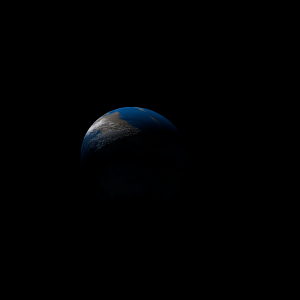|
|
Space Astro
|
Info for exoplanet "Gyusha Hyugu"
| Scientific (actual) data |
|---|
| Name | K2-188 c |
| Planet status | Confirmed |
| Radius | 0.252 |
| Orbital period | 7.81025 |
| Semi major axis | 0.0785 |
| Discovered | 2018 |
| Updated | 2021-02-05 |
| Tconj | 2457140 |
| Impact parameter | 0.37 |
| Temperature (kelvin) | 1026 |
| Publication | Published in a refereed paper |
| Detection type | Primary Transit |
| Alternate names | 2MASS J08391527+2321269 c, EPIC 212164470 c, EPIC 212164470.01, WISE J083915.28+232126.8 c |
| Star name | K2-188 |
| Right ascension | 129.81° |
| Declination | 23.36° |
| Mag j | 11.502 |
| Mag h | 11.246 |
| Star distance | 452.9 |
| Star metallicity | -0.01 |
| Star mass | 1.06 |
| Star radius | 1.19 |
| Star temperature | 5977 |
| Star alternate names | 2MASS J08391527+2321269, EPIC 212164470, WISE J083915.28+232126.8 |
| Wikipedia article | K2-188 c |
Back
| |
| Fictional info (?) |
|---|
| Suggested name | Gyusha Hyugu |
| Planet type | Hot planet |
| It is the coldest planetary atmosphere in its solar system, with a minimum temperature of 53°K (-220°C), and has a complex, layered cloud structure with neon thought to make up the lowest clouds, and 2H2O the uppermost layer of clouds.
Having almost no atmosphere to retain heat, it has surface temperatures that vary diurnally more than on any other planet in its solar system, ranging from 50°K (-223°C) at night to 1225°K (952°C) during the day across the equatorial regions.
It was the one of the first exoplanets visited by a spacecraft, and one of the first to be successfully landed on. |
| Atmosphere | 2H2O | 65% |
| Neon | 30% |
| Helium | 1.9% |
| Sulfur dioxide | 1.4% |
| Xenon | 0.41% |
| Nitric oxide | 0.024% |
| Oxygen | 0.0052% |
| Atmospheric pressure | 4 bar |
 |
| Moon | Hyahiza-ge | Very small irregular gaseous moon |
| Churu-mopabu Wo | Huge irregular crater-filled asteroid |
| Tagyupi Go | Very small irregular oceanic asteroid |
| Tamu Tomyo-ga | Small round gaseous moon |
| Nobyo | Large round ice planetoid |
| Kyajohya | Huge irregular rocky planetoid |
| Chishiya Gu | Medium-sized round crater-filled moon |
| Sepa'pupyu | Huge potato shaped crater-filled moon |
| Myubu | Large slightly egg-shaped crater-filled comet |
| Gyuopya-gitsugya | Very small slightly egg-shaped ice moon |
| Yabi | Medium-sized round crater-filled moon |
| Puno-guwo Pu | Very small potato shaped rocky comet |
| Google search for Gyusha hyugu |
|
Website by Joachim Michaelis
|
|
|
|